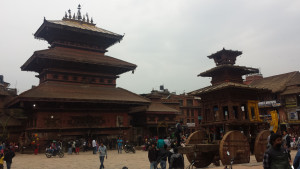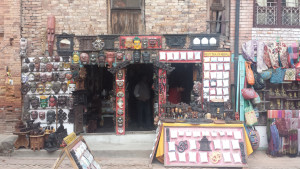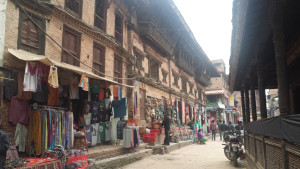Before I start writing this blog, I have to mention that this may not be a typical detailed travel blog like the ones you can find on the web but rather my experiences, my impressions and reliving my memories. I will mention places that are historically important, the most amazing sites to visit and my recommendations, but I will not get into details because I have experienced them in a limited timeframe.
One of the reasons why I love my job… I travel and I do travel to the most incredible places in the world. The very first time I set my foot on Nepalese ground, I felt an immediate connection to the country and its people.
Upon arrival at the Tribhuvan International Airport in Kathmandu you are most likely find a very long queue at immigration. For those who would like to avoid the long queue you should arrange a visa in advance that allows you to get through much faster. The baggage claim area is probably the most chaotic place in the airport building. Trekking excursion groups arrive with their full gear in boxes and backpacks and it takes a while to get through customs. On my first arrival in Kathmandu there was a huge wagon at the baggage claim transporting little chicks… Yes, little yellow chicks those were alive and constantly beeping. It didn’t feel like an airport but rather like a chicken factory. That’s one of those little details that leave a memory. (maybe nothing compared to other airports in the world)
Every trip to Nepal starts with exploring Kathmandu and its surroundings, also in preparation for your trekking trip in the Himalayas. You buy a full gear in your home country with the aim to arrive totally prepared, but then you still end up in Thamel realizing that something is missing.
Thamel is sort of the backpackers’ area with lots of hostels, cheap guest houses, trekking gear and souvenir shops, as well restaurants, bars and night clubs. The area is 24 hours alive and all of the time busy. It’s the meet up place for all trekking groups prior and after your adventure in the mountains. Experiences, advices and inside stories are being shared amongst all travellers.
Since my first trip to Nepal was mainly work related I only had a couple of days to explore the capital. This was in April 2014 (2 weeks before my first diagnosis), and the aim was to understand the city, the Nepalese culture and the people’s habits.
Within the Kathmandu Valley there are 7 UNESCO World Heritage Sites to be visited, which include: the 3 Durbar Squares in Kathmandu (also called Hanuman Dhoka), Patan and Bhaktapur; the Buddhist stupas of Swayambhu and Bauddhanath and the Hindu temples of Pashupati and Changu Narayan.
Before the Unification of Nepal, the country consisted of small kingdoms, and Durbar Squares are most prominent remnants of those old kingdoms in Nepal.

Bhaktapur Dubar Square
The term ‘dubar square’ describes the plazas in front of the old royal palaces in Nepal. The ones I have visited were the dubar square in Patan and in Bhaktapur.
Bhaktapur, located around 13km east from Kathmandu, has the best preserved old city center and dubar square of Nepal.
The architecture of Bhaktapur’s ancient city center, its historical monuments, and temples, is absolutely fascinating. By walking through the courtyards and little streets filled with craft work, pottery, weaving products and traditional art I literally sucked all impressions inside me. I wish I had more time to spend there, and to visit and learn more in detail about the temples, monuments and its lifestyle. But those amongst you who travel for business know there is only very limited time for exploring the city.

Souvenir Shop in Bhaktapur

Bhaktapur Streets
I have stayed at “The Inn” in Patan, which is a traditional Newari house changed into a heritage hotel. It is a true gem, hidden in a small court yard just off from Patan Dubar Square where the team welcomes you with the biggest and warmest hospitality. This is definitively the place to stay in Kathmandu providing a real Newari experience.